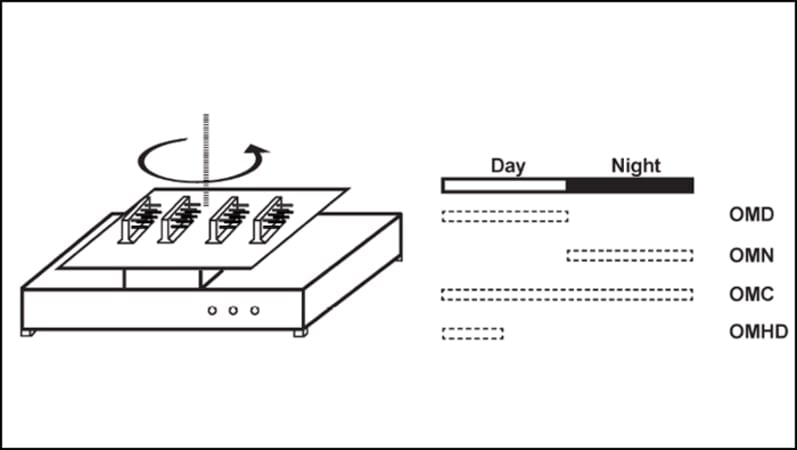Summary: Motor-sensing neurons in sensory organs play a key role in motion-induced sleepiness.
Source: SfN
People fall asleep on long car rides, fussy babies can be lulled to sleep in a rocking chair, and fruit flies in a tube doze off while spinning in slow circles.
The mechanism behind motion-induced sleep is unclear in humans, but in fruit flies, it depends on motion-sensitive neurons in sensory organs, according to new research published in Journal of Neuroscience.
Lone et al. monitored the sleep of fruit flies while they were moved in circles on a shaker. They repeated the experiment during the day and the night and on several genetic strains of flies.
Slow rotational speeds increased the frequency of daytime sleep in both male and female flies. The effect continued in flies missing key circadian clock genes, indicating the mechanism does not rely on the time of day.
The research team also investigated the role of nanchung receptors, an ion channel abundant in sensory organs that is sensitive to vibrations, motion, and other mechanical sensations.

Motion-induced sleep did not occur as often in the genetic strain of fly lacking nanchung-expressing neurons. Physically removing the nanchung neurons reduced the effect even more.
There may be a similar mechanism behind motion-induced sleep in humans via vibration-sensitive cells in the ear.
About this neuroscience research news
Author: Calli McMurray
Source: SfN
Contact: Calli McMurray – SfN
Image: The image is credited to Lone et al., JNeurosci 2021
Original Research: Closed access.
“Mechanosensory Stimulation via Nanchung Expressing Neurons Can Induce Daytime Sleep in Drosophila” by Shahnaz Rahman Lone, Sheetal Potdar, Archana Venkataraman, Nisha Sharma, Rutvij Kulkarni, Sushma Rao, Sukriti Mishra, Vasu Sheeba and Vijay Kumar Sharma. Journal of Neuroscience
Abstract
Mechanosensory Stimulation via Nanchung Expressing Neurons Can Induce Daytime Sleep in Drosophila
The neuronal and genetic bases of sleep, a phenomenon considered crucial for well-being of organisms, has been under investigation using the model organism Drosophila melanogaster. Although sleep is a state where sensory threshold for arousal is greater, it is known that certain kinds of repetitive sensory stimuli, such as rocking, can indeed promote sleep in humans.
Here we report that orbital motion-aided mechanosensory stimulation promotes sleep of male and female Drosophila, independent of the circadian clock, but controlled by the homeostatic system.
Mechanosensory receptor nanchung (Nan)-expressing neurons in the chordotonal organs mediate this sleep induction: flies in which these neurons are either silenced or ablated display significantly reduced sleep induction on mechanosensory stimulation. Transient activation of the Nan-expressing neurons also enhances sleep levels, confirming the role of these neurons in sleep induction.
We also reveal that certain regions of the antennal mechanosensory and motor center in the brain are involved in conveying information from the mechanosensory structures to the sleep centers.
Thus, we show, for the first time, that a circadian clock-independent pathway originating from peripherally distributed mechanosensors can promote daytime sleep of flies Drosophila melanogaster.
Significance Statement:
Our tendency to fall asleep in moving vehicles or the practice of rocking infants to sleep suggests that slow rhythmic movement can induce sleep, although we do not understand the mechanistic basis of this phenomenon.
We find that gentle orbital motion can induce behavioral quiescence even in flies, a highly genetically tractable system for sleep studies. We demonstrate that this is indeed true sleep based on its rapid reversibility by sensory stimulation, enhanced arousal threshold, and homeostatic control.
Furthermore, we demonstrate that mechanosensory neurons expressing a TRPV channel nanchung, located in the antennae and chordotonal organs, mediate orbital motion-induced sleep by communicating with antennal mechanosensory motor centers, which in turn may project to sleep centers in the brain.







